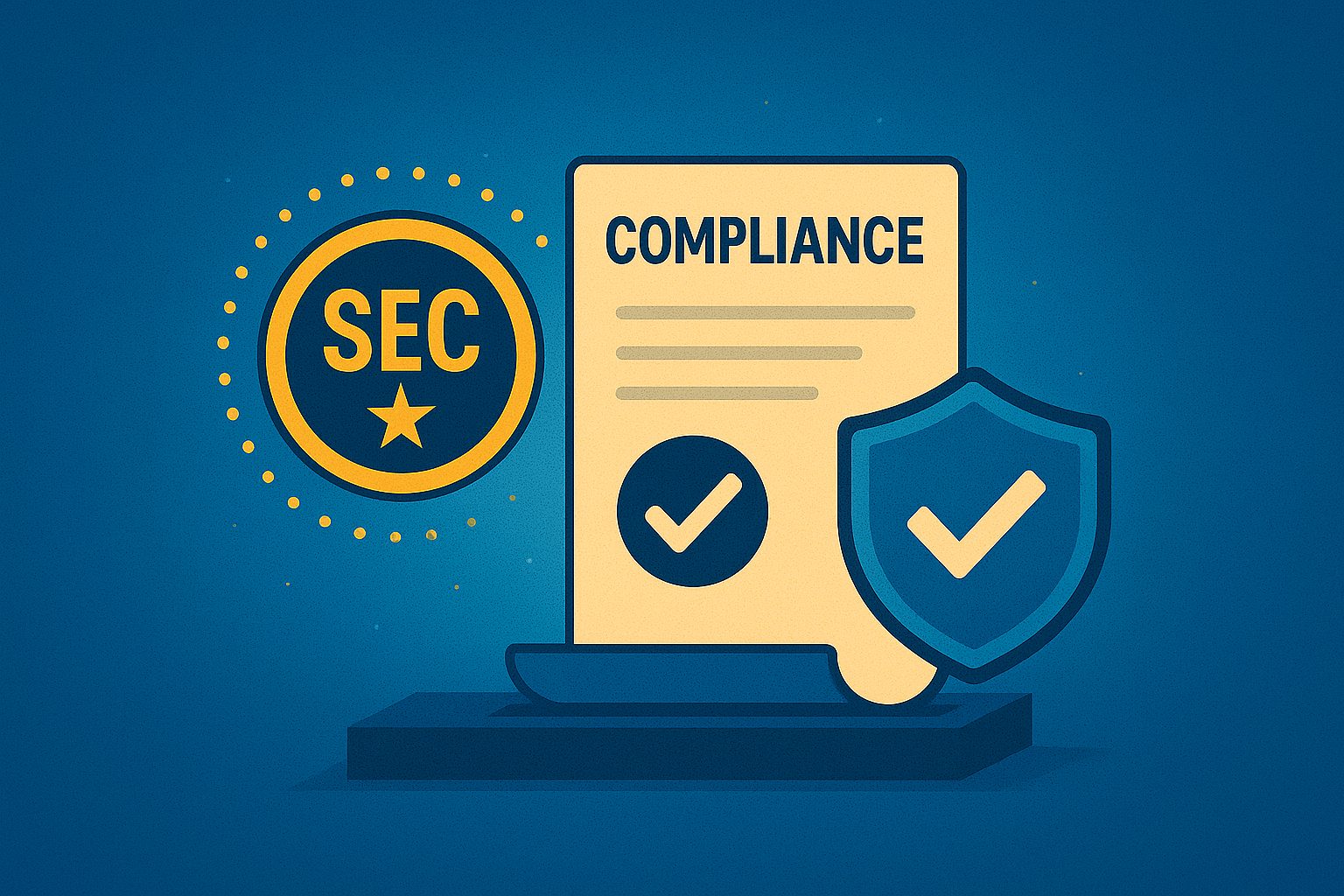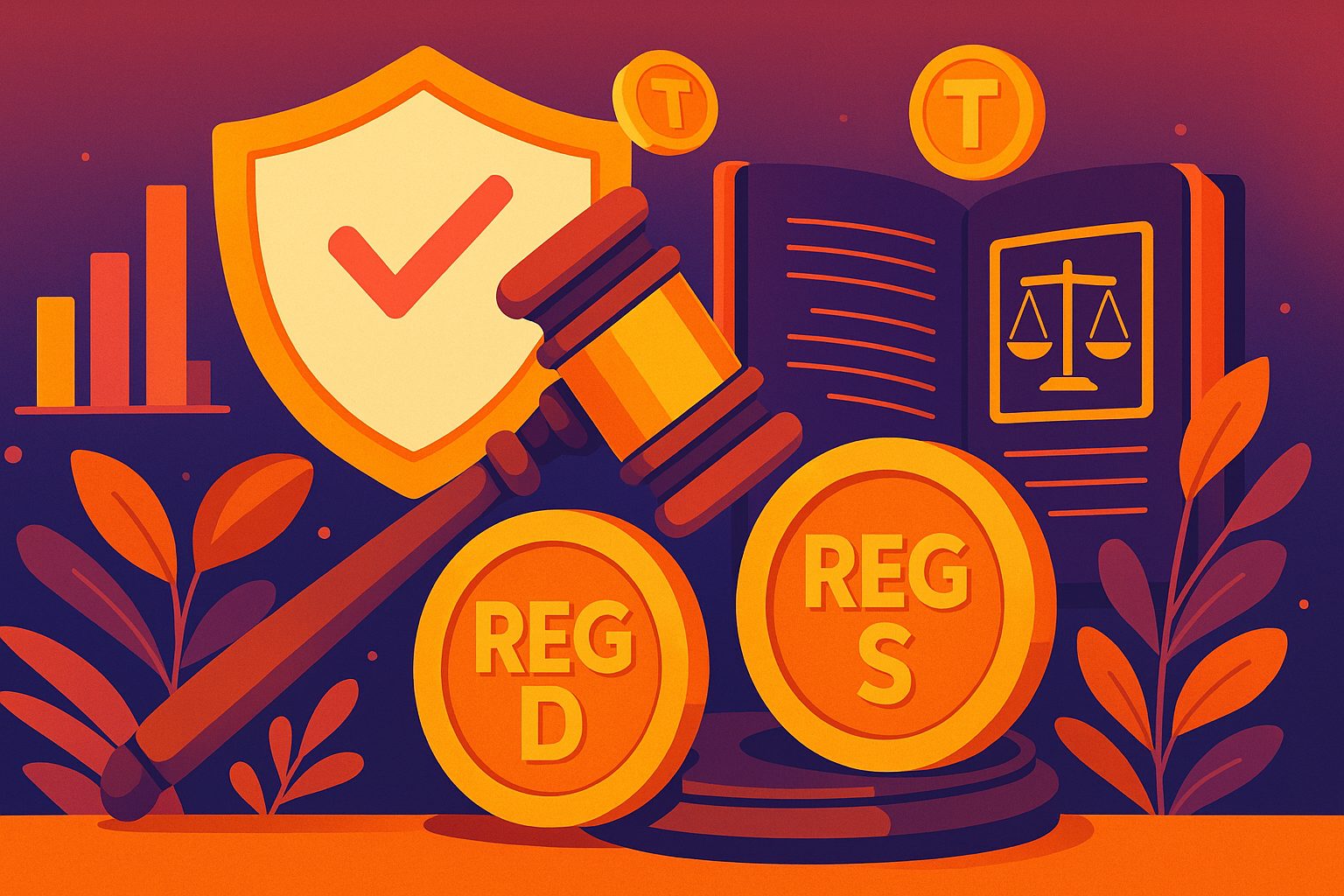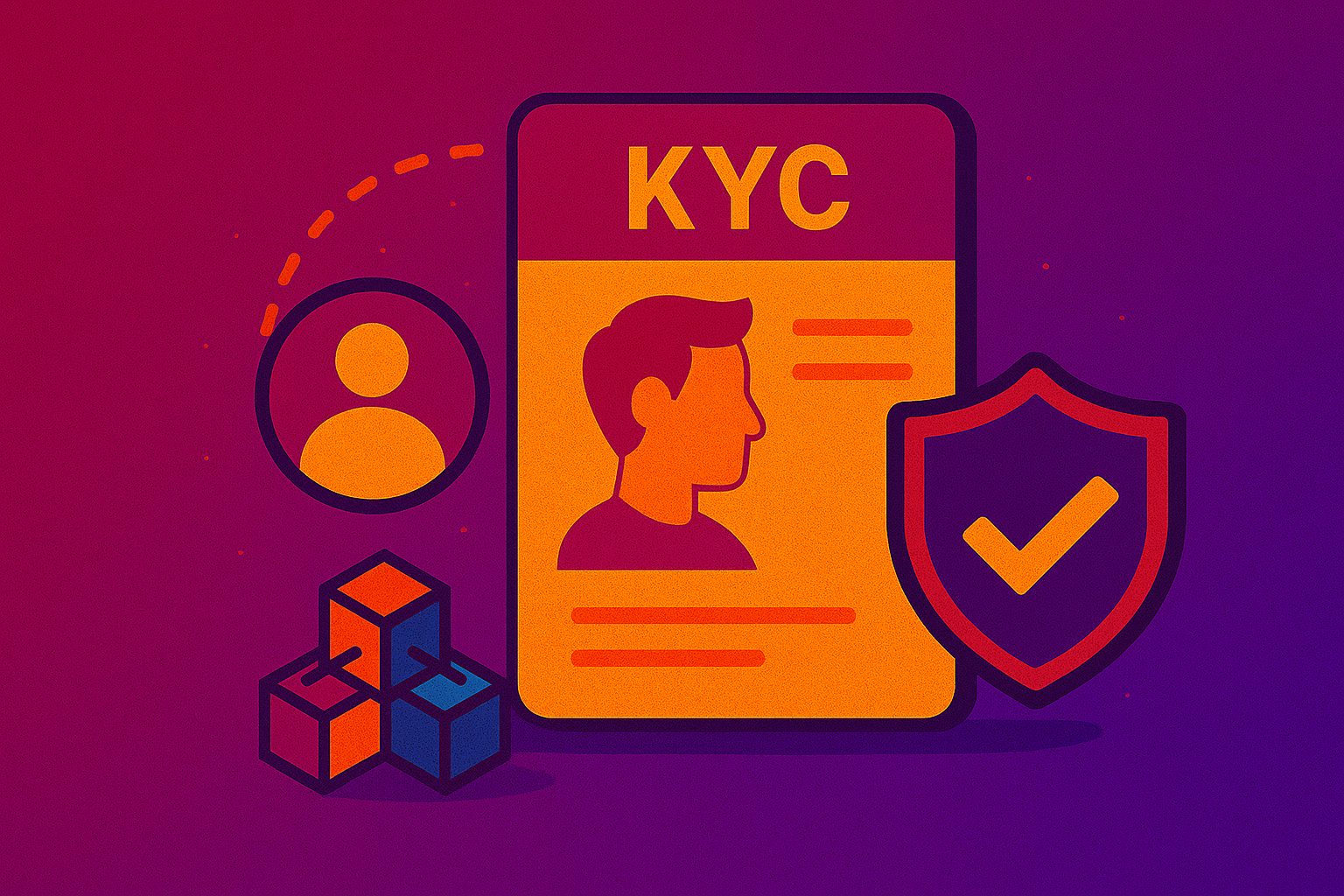Cracking the Compliance Code
In the high-stakes world of blockchain innovation and Initial Coin Offerings (ICOs), regulatory compliance is more than a legal checkbox—it’s a make-or-break factor that defines the success or downfall of your entire project. Among the maze of global regulatory bodies, none carries as much weight for U.S.-based or U.S.-targeting ICOs as the Securities and Exchange Commission (SEC). As entrepreneurs and tech visionaries craft ambitious fundraising strategies, understanding how to navigate SEC compliance becomes not just a matter of legality, but of credibility, sustainability, and investor trust. With enforcement actions rising and regulatory scrutiny intensifying, learning to crack the compliance code is essential for any ICO aiming to thrive in a maturing ecosystem.
Understanding the SEC’s Mandate and Influence
The SEC’s primary role is to protect investors, maintain fair markets, and facilitate capital formation. When it comes to ICOs, the SEC is particularly interested in determining whether a token offering constitutes the sale of a security. This determination is crucial because, if a token is deemed a security, it must comply with federal securities laws—complete with registration requirements, disclosure obligations, and specific investor protections. The foundation of this analysis lies in the Howey Test, a four-pronged legal standard that assesses whether an offering involves an investment of money in a common enterprise with an expectation of profit derived from the efforts of others. If your token checks those boxes, the SEC will likely treat it as a security, subjecting your ICO to rigorous oversight.
The Howey Test Demystified
At the heart of SEC compliance for ICOs is the Howey Test, a legal benchmark that stems from a 1946 U.S. Supreme Court decision. Though originally applied to citrus grove sales, the Howey Test has become a regulatory scalpel for dissecting token structures. The first prong—investment of money—is easily satisfied when contributors exchange fiat or crypto for tokens. The second prong—common enterprise—typically applies when token holders are bound by a shared economic fate. The third and fourth prongs—expectation of profit and reliance on others’ efforts—are more nuanced but often fulfilled when ICO marketing materials promise future platform value, token appreciation, or development milestones driven by the project team. Understanding these criteria allows you to structure your ICO from the ground up with regulatory foresight, helping you avoid costly legal entanglements.
Security or Utility? Drawing the Legal Line
One of the most debated topics in ICO design is whether your token qualifies as a security or a utility. A utility token is intended to provide access to a product or service, rather than to generate profit through speculation. However, the distinction is not always clear-cut. Simply calling your token a utility does not exempt it from securities laws. The SEC looks at substance over labels, and any profit-driven marketing message, speculative trading opportunity, or deferred token use can tip the scale toward security status. Token functionality, network decentralization, and actual use cases at launch all play into this classification. Navigating this gray area with careful legal guidance is essential, as misclassification can result in enforcement actions, fines, and the unwinding of your entire token sale.
Registering with the SEC: What It Really Means
If your token is classified as a security, you generally have two options: register with the SEC or qualify for an exemption. Full registration is akin to going public—it involves filing a Form S-1, preparing audited financial statements, and disclosing extensive business information. This process is costly, time-consuming, and often impractical for early-stage blockchain startups. However, it can also open doors to a broader pool of institutional investors and confer a level of legitimacy that benefits long-term growth. Projects that choose this route must be prepared to operate under ongoing reporting requirements, shareholder communication mandates, and compliance obligations. While daunting, full registration may make sense for companies with a long investment horizon, a robust legal team, and a vision to become a regulated industry leader.
Exemptions and Alternatives: Finding the Right Fit
Most ICOs opt to pursue one of several SEC exemptions that provide a more accessible path to token issuance while maintaining legal compliance. Regulation D, for instance, allows projects to raise funds from accredited investors without full registration, provided they meet certain filing and disclosure requirements. Regulation S permits offerings to non-U.S. investors, helping teams sidestep U.S. jurisdiction altogether. Regulation A+ enables public offerings up to $75 million annually with lighter disclosure requirements than a traditional IPO. Each exemption comes with its own conditions, limitations, and investor restrictions, so it’s vital to choose the one that best aligns with your fundraising goals, investor base, and long-term strategy. Selecting the right exemption early on can mean the difference between a seamless token launch and a prolonged legal battle.
Creating a Compliant Token Architecture
Designing your token with compliance in mind is more than just a legal strategy—it’s an architectural blueprint that affects user experience, market liquidity, and exchange listings. If your token is subject to securities laws, you’ll need to implement technical measures such as transfer restrictions, KYC integration, and identity whitelisting. Smart contracts should reflect these compliance controls at the protocol level, ensuring that only verified users can participate in token transfers or staking mechanisms. In addition, consider jurisdictional filtering to prevent unauthorized purchases from U.S. residents or blacklisted countries. This proactive approach to token architecture not only safeguards your project but also demonstrates to regulators that you take compliance seriously, potentially reducing your exposure to enforcement action.
Drafting Disclosures That Inspire Trust
Transparency is a core tenet of SEC compliance, and nothing builds trust with regulators and investors alike quite like a well-crafted disclosure. Whether you’re filing under Regulation D or preparing for a Regulation A+ offering, your disclosure documents should clearly articulate the risks, mechanics, team background, token economics, and project roadmap. Don’t downplay uncertainties or gloss over potential legal issues. The SEC expects full, fair, and truthful disclosures that allow investors to make informed decisions. In fact, many enforcement actions stem not from the token structure itself but from misleading or incomplete statements in whitepapers, marketing materials, or investor decks. By embracing candor and professional documentation, you position your ICO as a transparent, investor-friendly endeavor.
KYC, AML, and the Identity Imperative
In the age of decentralized finance, the tension between anonymity and compliance is palpable. However, when launching a compliant ICO, Know Your Customer (KYC) and Anti-Money Laundering (AML) procedures are non-negotiable. These frameworks require you to verify the identity of your contributors, screen for sanctioned individuals, and monitor for suspicious behavior. Though these practices may seem antithetical to the ideals of decentralization, they are critical for avoiding regulatory scrutiny and aligning with SEC expectations. Implementing KYC/AML protocols also facilitates partnerships with exchanges, banks, and payment providers—many of whom require regulatory compliance before offering services. The identity imperative may feel like a trade-off, but it is one that enhances both legal standing and institutional appeal.
Engaging Legal Counsel Early in the Process
Too many ICO projects make the mistake of consulting legal experts only after they’ve begun fundraising. This reactive approach often leads to missed red flags, flawed structuring, or retroactive regulatory damage control. Instead, engaging legal counsel from day one enables you to shape your ICO in accordance with SEC guidelines from the ground up. Experienced securities attorneys can help you conduct a Howey analysis, draft compliant token sale agreements, select the appropriate exemption, and review marketing content for regulatory pitfalls. Moreover, legal partners with crypto experience can serve as strategic advisors, connecting you with custodians, KYC providers, and auditing firms to support your broader compliance ecosystem. In a space where regulatory clarity is still evolving, having knowledgeable counsel by your side is your best insurance policy.
Communicating with Confidence: Marketing Within Boundaries
Marketing plays a vital role in the success of any ICO, but aggressive or misleading promotion can land your project in hot regulatory water. The SEC scrutinizes marketing content for signs of unregistered securities offerings, especially if promotions target U.S. investors or include profit projections. Avoid statements that promise returns, speculate on future token value, or imply guaranteed listing on major exchanges. Focus instead on the technology, utility, and mission of your project. Use disclaimers and clarify the risks, and ensure that all marketing collateral is reviewed by your legal team before publication. Striking the right tone—enthusiastic but factual—helps you communicate with confidence while staying within regulatory boundaries.
Preparing for the Long Game: Ongoing Compliance and Reporting
Compliance doesn’t end once your ICO concludes. If your token is treated as a security, you may be subject to ongoing reporting obligations, including quarterly financial disclosures, material event filings, and shareholder communications. Even if your ICO qualifies for an exemption, maintaining detailed records of investor communications, KYC verifications, and financial transactions is crucial in case of a future audit or enforcement review. Building a compliance culture from the outset ensures that your team is ready to adapt to changing regulations and investor expectations. The projects that endure are those that treat compliance not as a hurdle, but as a foundation for sustainable, responsible innovation.
Future-Proofing Your ICO Strategy
With regulatory frameworks still evolving, it’s essential to future-proof your ICO strategy by staying agile, informed, and engaged with the broader crypto policy landscape. Monitor SEC statements, industry guidelines, and legal precedent to anticipate shifts in enforcement trends or compliance standards. Participate in advocacy groups, join industry associations, and consider hiring regulatory affairs professionals to keep your team ahead of the curve. Additionally, explore emerging models like tokenized equity, governance tokens, or compliance-as-a-service platforms that offer novel ways to align with legal frameworks while maintaining blockchain principles. The more forward-thinking your approach, the better positioned you’ll be to weather regulatory storms and build long-term value.
Bringing It All Together: Compliance as a Competitive Advantage
In a space known for rapid innovation and occasional recklessness, embracing SEC compliance can serve as a competitive advantage rather than a constraint. Projects that prioritize legal integrity not only avoid fines and shutdowns but also gain access to institutional capital, premium exchange listings, and long-term investor trust. By weaving compliance into your project’s DNA—from token design and KYC processes to legal disclosures and marketing communications—you don’t just survive regulation, you thrive because of it. In an industry that’s maturing by the day, the most successful ICOs will be those that meet the moment with both vision and vigilance.
Navigating SEC compliance is no longer optional—it’s essential. So build smart, communicate clearly, and let compliance be the catalyst that drives your ICO forward into a secure and sustainable future.




